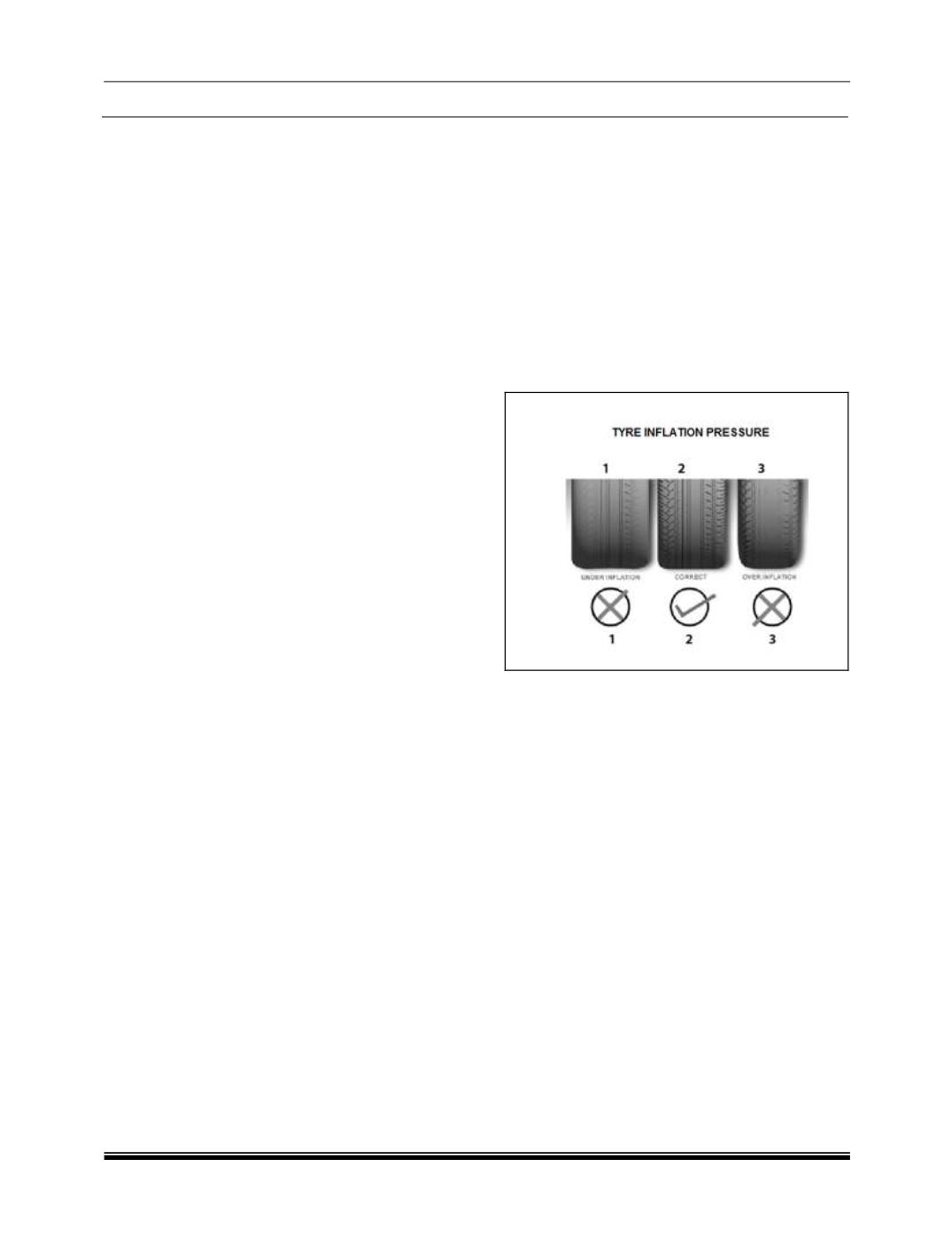
SUSPENSION
39
The “low spot” of the wheel is originally marked by
paint dot on the wheel rim. If properly assembled,
the wheel rims’ paint dot should be aligned with
the tyres’ paint dot. Whenever a tyre is
dismounted from its wheel it should be remounted
so that the tyre and wheel are matched. If the
tyre’s paint dot cannot be located, a line should be
marked on the tyre and wheel before dismounting
to assure that it is remounted in the same
position.
6.10.2 INFLATION OF TYRES:
The pressure recommended for any model is
carefully calculated to give a satisfactory ride,
stability, steering tread wear, tyre life and
resistance to bruises.
Tyre pressure with tyres cold, (after vehicle set for
three hours or more or driven less than one mile)
should be checked monthly or before any
extended trip. It is normal for tyre pressure to
increase (0.28 bars, 4 psi) when the tyres become
hot during driving. Do not bleed or reduce tyre
pressure after driving. Bleeding reduces the “Cold
inflation Pressure”.
Recommended tyre pressures are
:
Front
: 33 to 35 psi.
Rear:
28-32 psi
In case of temporary spare wheel, tyre pressure
of temporary tyre should be 35 psi
Higher than recommended pressure can cause:
1. Hard ride
2. Tyre brushing or carcass damage
3. Rapid tread wear at center of tyre
Unequal pressure on same axle can cause:
1. Uneven braking
2. Vehicle pull
3. Reduced handling
4. Swerve on acceleration
Valve caps should be on the valves to keep dust
and water out.
Lower than recommended pressure can cause:
1. Tyre squeals on turns.
2. Hard steering
3. Rapid and uneven wear on the edges of the
tread
4. Tyre rim bruises and rupture
5. Tyre cord breakage
6. High tyre temperature
7. Reduced handling
8. High fuel consumption


